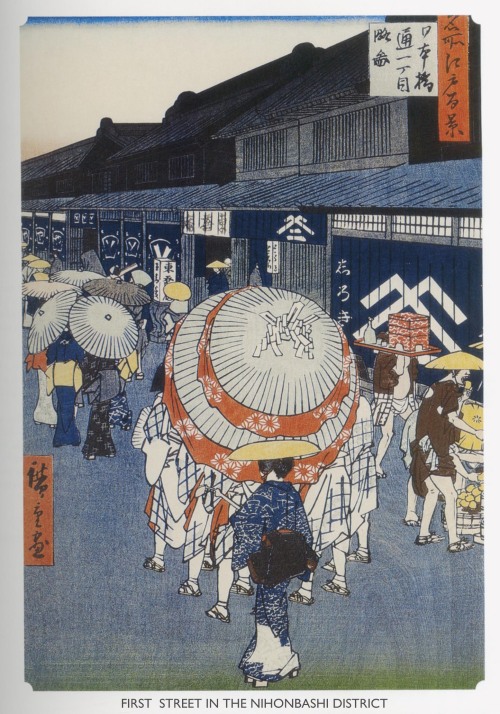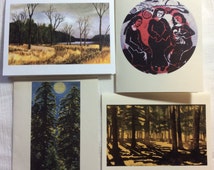
An edition of the Confucian Analects was printed in 1598, using a Korean moveable type printing press, at the order of Emperor Go-Yōzei. The printing-press seized from Korea by Toyotomi Hideyoshi's forces in 1593 was also in use at the same time as the printing press from Europe. However, western printing-press were discontinued after the ban on Christianity in 1614. Western style movable type printing-press was brought to Japan by Tenshō embassy in 1590, and was first printed in Kazusa, Nagasaki in 1591. In the Kamakura period from the 12th century to the 13th century, many books were printed and published by woodblock printing at Buddhist temples in Kyoto and Kamakura.

However, an important set of fans of the late Heian period (12th century), containing painted images and Buddhist sutras, reveal from loss of paint that the underdrawing for the paintings was printed from blocks. For centuries, printing was mainly restricted to the Buddhist sphere, as it was too expensive for mass production, and did not have a receptive, literate public as a market. īy the eleventh century, Buddhist temples in Japan produced printed books of sutras, mandalas, and other Buddhist texts and images.

These are the earliest examples of woodblock printing known, or documented, from Japan. These were distributed to temples around the country as thanks for the suppression of the Emi Rebellion of 764.
MOKU HANGA PRINTMAKING 1800S FULL
Seating is first come, first served and available on a drop-in basis, although we do recommend attending for the full hour-long talk.In 764 the Empress Kōken commissioned one million small wooden pagodas, each containing a small woodblock scroll printed with a Buddhist text ( Hyakumantō Darani). Illustration: Permission Solo, Micah Schwaberow Ticket Informationįree after museum admission. I have been practicing moku-hanga for almost 30 years now, yetI feel I am just beginning to expolre the potential of this medium." -Michah Schwaberow "Watercolor printed from carved wooden blocks is unlike any other color I know. Even when a satisfactory test proof is achieved, the printing of the final edition is unpredictable. Most of the work for every print is in the days and weeks of preplaning and the months of endless color-testing, remixing, recarving, washing all the blocks and brushes, and beginning again. "Multiple-block printmaking is not spontaneous. Yet the process is simultaneously complex, challenging my craftsmanship at every turn. it is simple, in the way that making a pot is simple: wood and paper, water and pigment, hand and tool. He focuses on the effect of his work and not only the printing itself. "I am trying to make woodblock prints that don't look like woodblock prints - the wood and the knife invisible, the colors and edges as soft and resonant as a watercolor." "I work in the traditional Japanese moku-hanga woodblock technique for many reasons. Schwaberow combines Eastern and Western elements in his prints. Intimate glimpses through small windows." This way unimposing things become more important. He regards his work as "color haiku, large places compressed. Additionally Schwaberow created esthetic gourd vessels. Much of his paper work, mainly the woodblock prints, appeared in some precious editions of typographic books, including Tuolumne, Book I, which received the highest award during festivities at Yosemite National Park.Īt first sight Schwaberow's paper works look unspectacular. At Elizabeth Quandt-Barr's he addressed himself to other print techniques as well as artistic painting. Schwaberow learned all about traditional Japanese woodblock printing methods at the studio of Toshi Yoshida. The artist will break down the process to illustrate the sequence and build up of steps, color components, and materials.


Join artist Micah Schwaberow for a special presentation on the traditional art of moku-hanga, woodblock printing. Hour-long presentations start at noon, 1:20 p.m., and 2:40 p.m., with a short Q&A session to follow each The Art of moku-hanga: Japanese woodblock printmaking


 0 kommentar(er)
0 kommentar(er)
